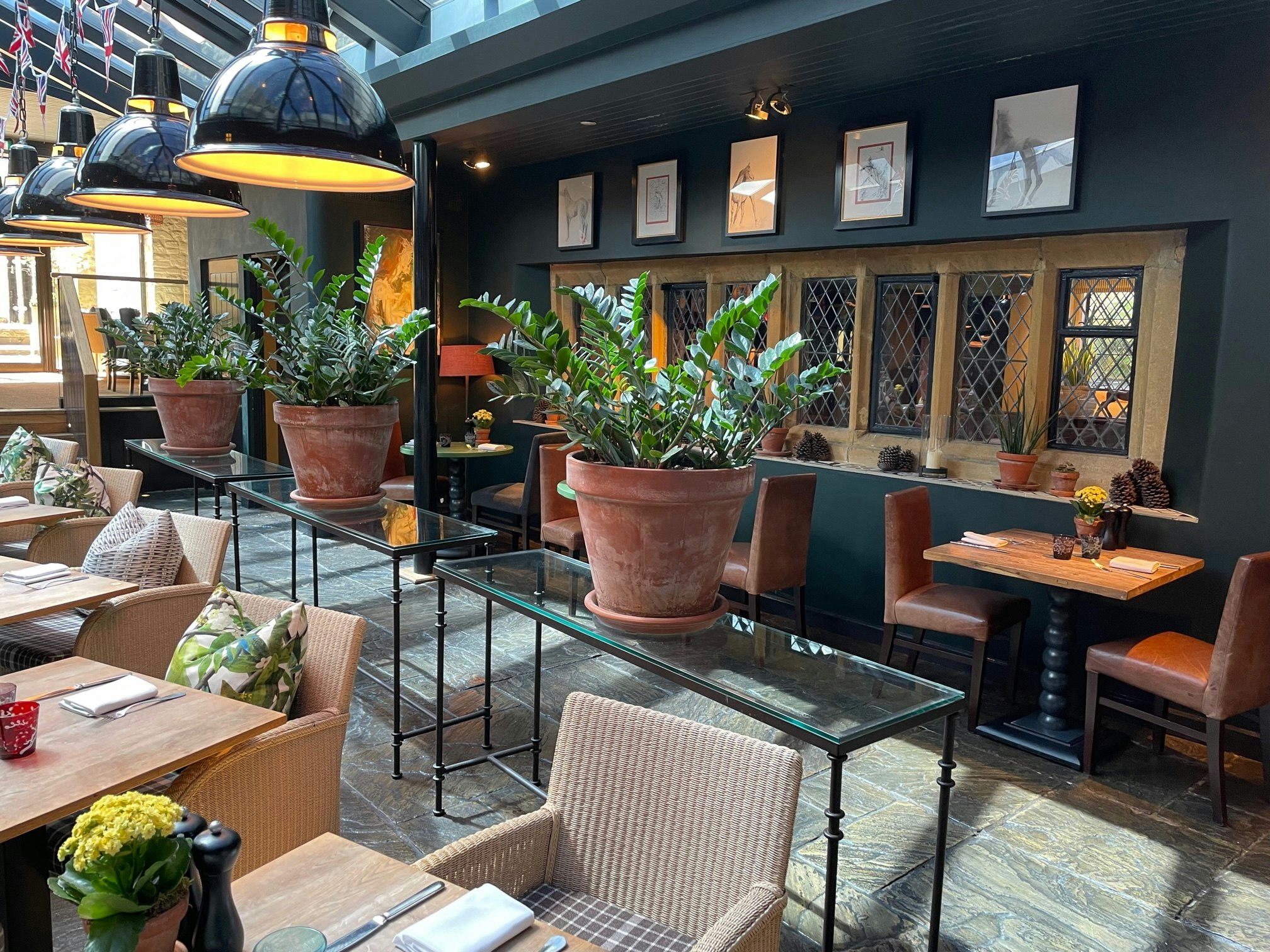The Broadway Hotel Story
Cotswolds Art and Crafts… and a Grey Lady
A recent guest from the other side of the Atlantic wrote a Google review that we especially liked: “Our room goes up and down in places, the stairs creak and that was EXACTLY what we were hoping for… so much character in this building”.
The review reflects the fact that the hotel is an historic listed 16th Century building, situated on a Cotswolds village green. For many guests that’s about as ‘English’ as you can get. It’s a feeling enhanced by the fact that the hotel front shows both Cotswold stone and traditional ‘black and white’ timbers (which are relatively rare in the Cotswolds). Not surprisingly then, we’re often asked about the history of the village and the hotel:
There are traces of early Roman settlements here, but Broadway village as we know it owes its existence to the abbots of Pershore. They owned the estates here from at least the 10th century. The abbey established the village as a kind of 'new town' in the mediaeval period, around 1300. By the second half of that century - the time of Chaucer - Broadway was a thriving agricultural centre.
Any visitor to the Cotswolds quickly learns that the sheep and wool industry played a vital role for centuries. In fact, it’s difficult to overstate the importance of the wool trade to Broadway, the Cotswolds and to England. That’s why the Speaker of the House of Lords sits on a woolsack, as a symbol of power and wealth. Cotswolds wool was deemed special, the heavy fleeces of the local Cotswold breed of sheep attracted high prices in the markets of Europe. The money made was spent in the Cotswolds on the churches, manor houses and buildings that you see today across the area.
After Henry VIII’s dissolution of the monasteries, in 1539, Broadway continued to thrive, but possibly became a little sleepier, and came to be considered a village rather than a town. The buildings that came to be The Broadway Hotel are, basically, from this era, although the earliest parts of our building date from the 15th century. We know that the originally buildings include what was called ‘Ivy Cottage’, whilst our dining room and kitchens occupy what was known as Tanyard Cottages.
The town of Broadway seems to have remained a prosperous place through the 17th and 18th century. It was a stop on coaching routes and continued to be a trading place for wool.
From the deeds of our building we know that in 1772, the property became a blacksmiths and later the village bakery. Incidentally, this was about the time at which the planning and construction of our local landmark - Broadway Tower - began. This was inspired by Lancelot ‘Capability’ Brown and the work was carried out for the 6th Earl of Coventry. The Tower was completed in 1798.
In 1896, the property that forms the core of the hotel was sold for £930, which sounds something of a bargain now. However, this was a time where a farm labourer would have been lucky to earn £40-50 a year.
Broadway village may have early origins but in some ways its story becomes most interesting in the Victorian era and 20th Century…
In 1863, Broadway Tower was leased by a teacher called Cormell Price who was visited by friends such as Dante Gabriel Rossetti, William Morris and Edward Burne-Jones. It wasn’t a very practical arrangement - Morris’s daughter May wrote that “The Tower itself was certainly absurd: the men had to bathe on the roof – when the wind didn’t blow the soap away and there was water enough. The way supplies reached us I don’t quite know…” but it was certainly an inspirational setting for these artists, writers and craftspeople.
Later, in Broadway village itself, an artistic colony developed of mainly American artists, attracted by the village’s rural charm. John Singer Sargent first visited, to spend time recovering from a head wound sustained when diving (as you do) into a weir. He began his famous painting ‘Carnation Lily, Lily, Rose’ here. The artist and writer Frank Millet invited Mark Twain to Broadway to be his best man. Henry James visited too. Incidentally, Millet was last seen on the Titanic, helping women and children into a lifeboat.
After the First World War, Broadway was revitalised by Gordon Russell, whose ‘Broadway Adventure’ was a furniture business founded on the ideas of the Arts of Crafts Movement. He admired the Arts and Crafts ethos of craftsmanship and respect for workers, their accommodation and their lives. At the same time, the self-taught Russell had an appreciation for the role that machines could play in making quality furniture affordable. His business was a success, with Russell an inspiration until his death in 1980. Today he is a revered name in furniture making. You can explore his legacy as a designer, innovator and champion of high quality everyday design at the Gordon Russell Design Museum in Broadway.
Incidentally, the Design Museum is one of two museums in Broadway. The other is The Broadway Museum and Art Gallery, a traditional community museum that explores the history of the village. It’s also in partnership with The Ashmolean Museum in Oxford, with curated exhibitions and displays of paintings, porcelain, furniture and artefacts drawing on that museum’s collection.
In 1934 ‘The Broadway Hotel’ was opened, under the ownership of a Mr Whiteman. The hotel passed through various owners along the decades, notably Ian Allen of trainspotting and publishing fame (The name ‘Ian Allen’ still evokes a misty-eyed nostalgia amongst men of a certain age.). This all provides an appropriate connection with our local Gloucestershire-Warwickshire Steam Railway.
Today, The Broadway Hotel is owned by the Horton family, remaining firmly independent and aiming for modern standards of design and service in the authentic setting of a Grade II listed 16th Century building.
Given our long history, there is one question that we’re often asked. Is the hotel haunted? Many people who have worked, lived or stayed here are convinced that it is. There have been, over the years, various reports of ‘grey ladies’ - glimpsed disappearing up the wooden stairways leading up to rooms 30 and 33. However, the only consistently reported ghost has never been seen at all - only ever heard. She (nobody has ever doubted the sex of the ghost) has been heard many times by both visitors and members of staff, always in the early hours of the morning and usually in the minstrels’ gallery above the main lounge. She is clearly harmless, however.
It’s wonderful to think that the Broadway Hotel’s origins are older than America, The Thirty Years’ War or the death of Queen Elizabeth I. We hope that you enjoy the atmosphere of this special place.


